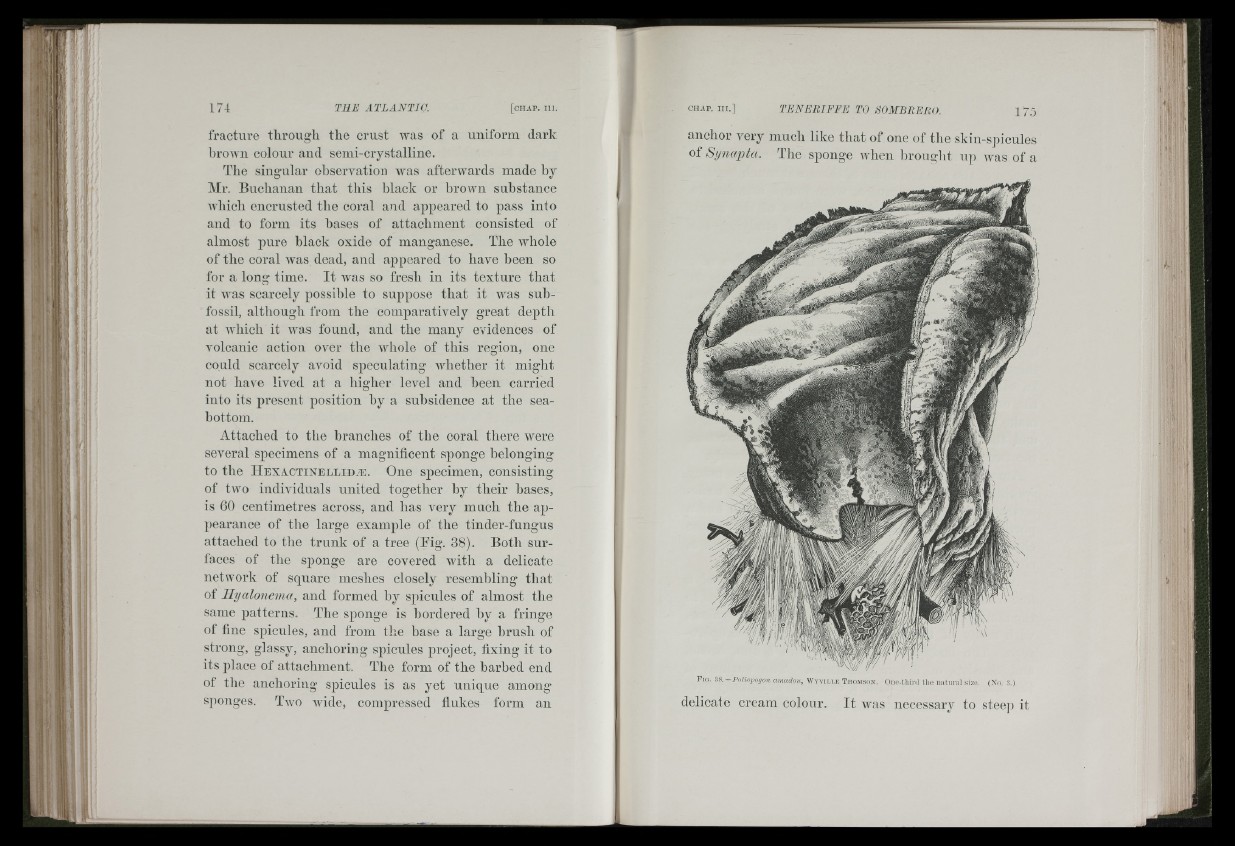
I
Ifracture
through the crust Avas of a uuiform dark
broAvu colour aud semi-crystalliue.
The singular ohseiwation AA^as afterwards made by
Mr. Buchanan that this black or brown substance
AAdiich encrusted tlie coral and appeared to pass into
and to form its bases of attachment consisted of
almost pure hlack oxide of manganese. The Avhole
of the coral Avas dead, and appeared to have heen so
for a long time. It was so fresh in its texture that
it Avas scarcely possible to suppose that it Avas subfossil,
although from the comparatively great depth
at AAdiich it AA^as found, and the many evidences of
volcanic action over the Avhole of this region, one
could scarcely avoid speculating AAdiether it might
not have lived at a higher level and heen carried
iuto its present position hy a subsidence at the sea-
bottom.
Attached to the branches of the coral there were
several specimens of a magniiicent sponge helonging
to the Hexactinellidh:. One specimen, consisting
of tAAm individuals united together by their bases,
is 60 centimetres across, aud has very much the appearance
of the large example of the tinder-fungus
attached to the trunk of a tree (Fig. 38). Both surfaces
of the sponge are covered Avith a delicate
uetAvork of square meshes closely resembling that
of Hyalonema, and formed hy spicules of almost the
same patterns. The sponge is bordered hy a fringe
of fine spicules, aud from the base a large brush of
strong, glassy, anchoring spicules project, fixing it to
its place of attachment. The form of the barbed end
of the anchoring spicules is as yet unique among
sponges. Tavo Avide, compressed flukes form an
T E N E R I F F E T O S O M B R E R O .
auchor very much like that of one of the skin-spicules
of Synapta. Tlie sponge Avhen lirouglit up was of a
E ia . H S .-P o lio p o g o n amadou, W y v ille Thomson. Onc-tliird th e natural size. (Xo. :!.)
delicate cream colour. It was necessary to steep it
■ m .
‘•if h
¡»•IrV:
i